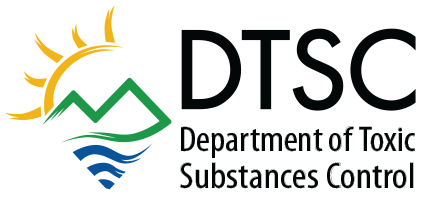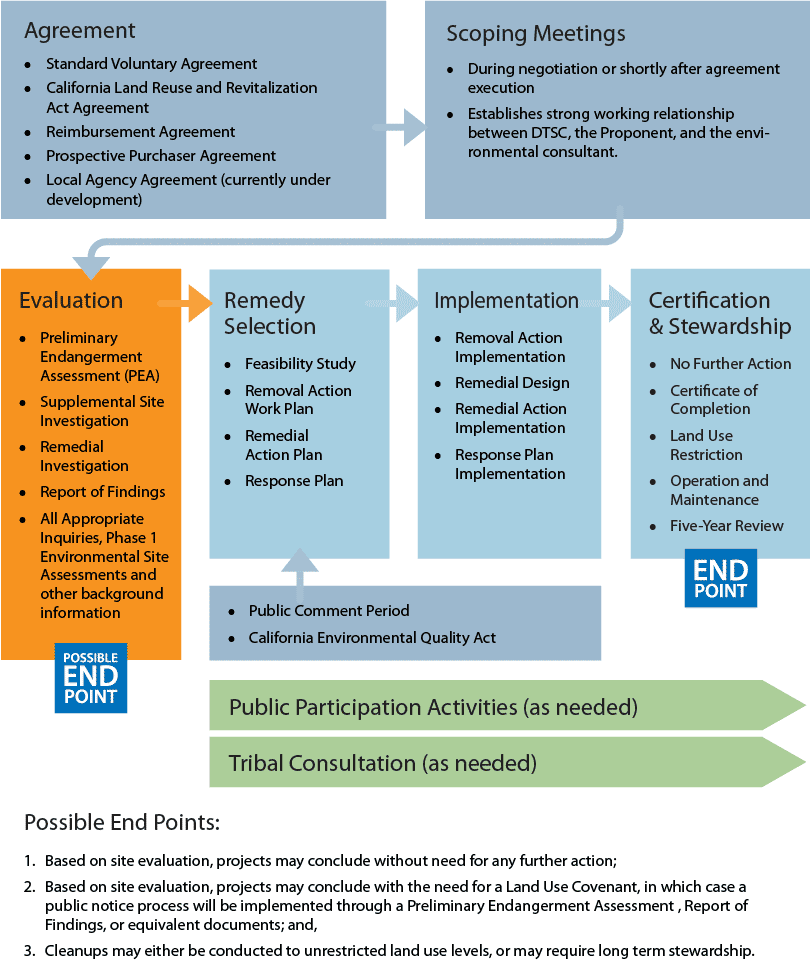Polychlorinated Biphenyl (PCB) Evaluation Quick Reference Guide
Polychlorinated biphenyls (PCBs) are mixtures of 200-plus individual chlorinated compounds (known as congeners). PCBs were used in many applications like coolants and lubricants in transformers, capacitors, and other electrical equipment because they don’t burn easily and are good insulators. The manufacture of PCBs ended in the U.S. in the late 1970s because they can cause harmful effects to human health and the environment. PCBs can be found in sources such as fluorescent light ballasts and electrical devices with PCB capacitors, hydraulic oils, and building materials. PCBs are toxic, highly persistent in the environment, and bioaccumulate. There are no known natural sources of PCBs.
Although the Department of Toxic Substances Control (DTSC) is a lead regulatory agency for site cleanups in California, engagement with the U.S. Environmental Protection Agency (U.S. EPA) is required when addressing PCB- contaminated sites. Since Toxic Substances Control Act (TSCA) PCB regulations are not delegated, U.S. EPA is the regulatory lead for the cleanup of PCBs under the TSCA PCB cleanup requirements in 40 CFR 761. For more details, see Section A(4)(e), PCB FAST (PCB Facility Approval Streamlining Toolbox.)
If PCBs are detected at levels that may require cleanup:
- DTSC will notify U.S. EPA of PCB contamination before full characterization/ cleanup plan formulation.
- U.S. EPA may require additional PCB characterization and/or information to determine if TSCA applies.
- If U.S. EPA determines PCBs are not subject to TSCA, DTSC will remain the lead, and U.S. EPA may be available for technical support.
- If subject to TSCA, U.S. EPA will assume the lead only for the cleanup of PCBs, will review reports and other deliverables, and will continue to closely coordinate with DTSC on site-specific PCB matters.
- Some contaminants (e.g., chlorobenzene) that U.S. EPA cannot address under TSCA may enhance the mobility of PCBs. In those situations, U.S. EPA will work closely with DTSC in the context of impacts on the cleanup of PCBs.
- If an institutional control is needed because PCBs are left in place above the unrestricted land use goals, DTSC will implement a Land Use Covenant in consultation with U.S. EPA; see Section III-B.10, PCB FAST.
Resources
There are several documents to guide the data collection/evaluation of PCBs in California:
- Human Health Risk Assessment (HHRA) Note 8: Recommendations for Evaluating Polychlorinated Biphenyls (PCBs) at Contaminated Sites in California – June 2020
- U.S. EPA Regional Screening Levels
- Preliminary Endangerment Assessment Guidance Manual
- Interim Guidance Evaluation of School Sites with Potential Contamination from Lead Based Paint, Termiticides, and Electrical Transformers
U.S. EPA’s PCB Facility Approval Streamlining Toolbox (PCB FAST)
The PCB Facility Approval Streamlining Toolbox (PCB FAST), used for U.S. EPA-lead projects, is designed to help parties interested in cleaning up a PCB-impacted site. PCB FAST focuses on establishing a collaborative working relationship and includes tools to prepare adequate and appropriate cleanup notifications and applications. A discussion on cleanup levels is also included. DTSC recommends the use of PCB FAST along with aforementioned DTSC resources.
Analytical Methodology and Action Levels
DTSC and U.S. EPA require Method 8082 for PCB analysis, and recommend Method 1668 or 680 on select samples to provide a detailed specfication of PCBs in certain situations. U.S. EPA’s regulations require the use of Method 3540C (Soxhlet) or 3550C (Ultrasonic) for extraction of PCBs. U.S. EPA prefers the use of PCB extraction Method 3540C.
U.S. EPA publishes Regional Screening Levels (RSLs) for total PCBs (0.23 and 0.94 mg/kg for residential and commercial/industrial use, respectively) and individual Aroclors and dioxin-like congeners. For detailed information on the application of RSLs refer to the resources list above).
For more information, contact:
Maryam.Tasnif-Abbasi@dtsc.ca.gov
(CA Department of Toxic Substances Control)
Santos.Carmen@epa.gov
(U.S. EPA Region 9 PCB Coordinator)
Download a collection of all DTSC Voluntary Agreements Quick Sheets
Download PDF version of this diagram.
This document is intended to be guidance only and it does not supersede or implement laws or regulations. The information in this advisory is intended solely as guidance and as educational reference material and should not be considered enforceable or regulatory in nature.
Brownfields Links
Quick Reference Guides
- Preliminary Endangerment Assessment (PEA) Process Quick Reference Guide
- Supplemental Site Investigation Report Quick Reference Guide
- Supplemental Site Investigation Work Plan Quick Reference Guide
- Remedial Investigation & Feasibility Study Process
- Remedial Investigation Report Quick Reference Guide
- California Land Reuse and Revitalization Act (CLRRA) Site Assessment Plan/Report of Findings
- Polychlorinated Biphenyl (PCB) Evaluation Quick Reference Guide
- Human Health Risk Assessments Quick Reference Guide
Site Mitigation & Restoration Program Links
- Brownfields
- Cleanup in Vulnerable Communities Initiative (CVCI)
- EnviroStor
- Exide
- Human and Ecological Risk Office
- Lead-Acid Battery Recycling Facility Investigation and Cleanup Program
- Loans & Grants
- Land Use Restriction Sites
- Santa Susana Field Laboratory
- School Sites
- Sea Level Rise
- State Superfund Program
- Strategic Plan and Program Enhancement Work Plan
- Vapor Intrusion
- Contact Information



